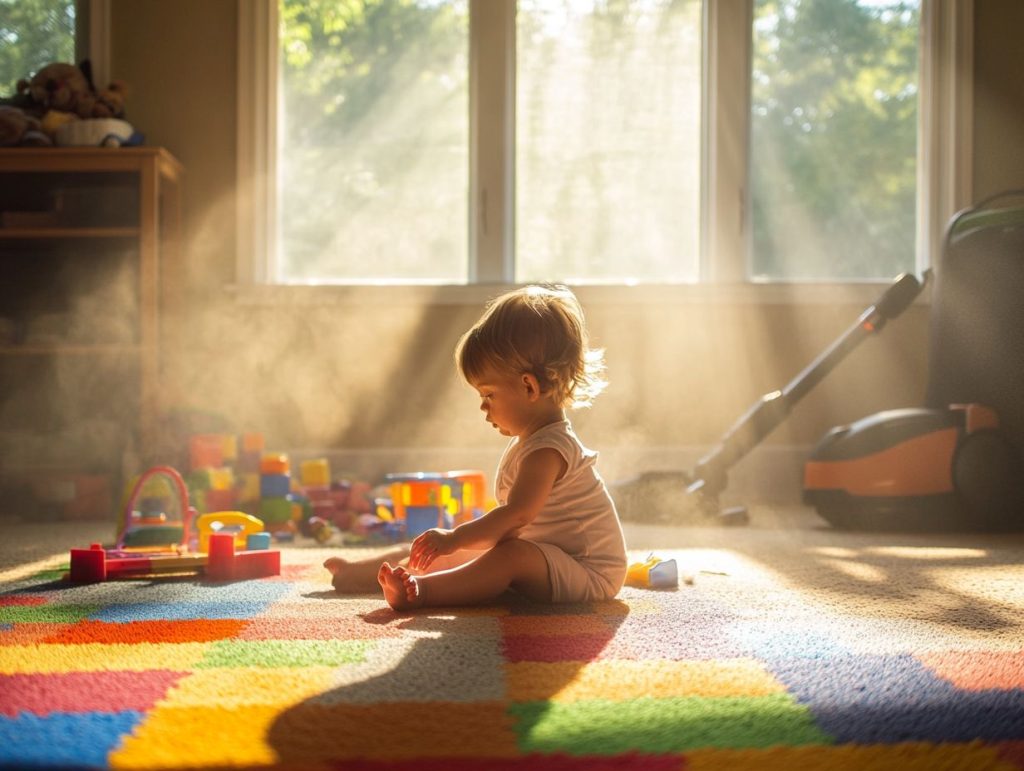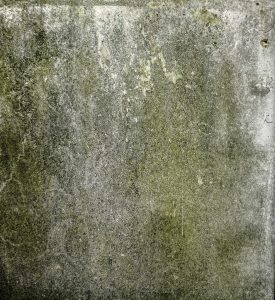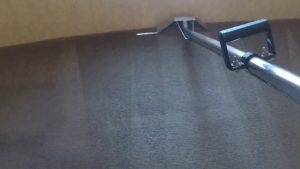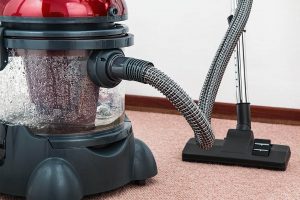How to Improve Indoor Air Quality with Regular Carpet Maintenance
Indoor air quality is crucial for your family’s health and well-being, yet most people take it for granted. Poor air quality can stem from various sources, including the carpets we walk on daily.
This article explores the significant impact of carpets on indoor air quality, highlighting common contaminants they harbour and the importance of regular maintenance. It also discusses effective carpet cleaning methods and tips for enhancing home air quality. Discover how to create a healthier living environment with simple yet effective strategies!
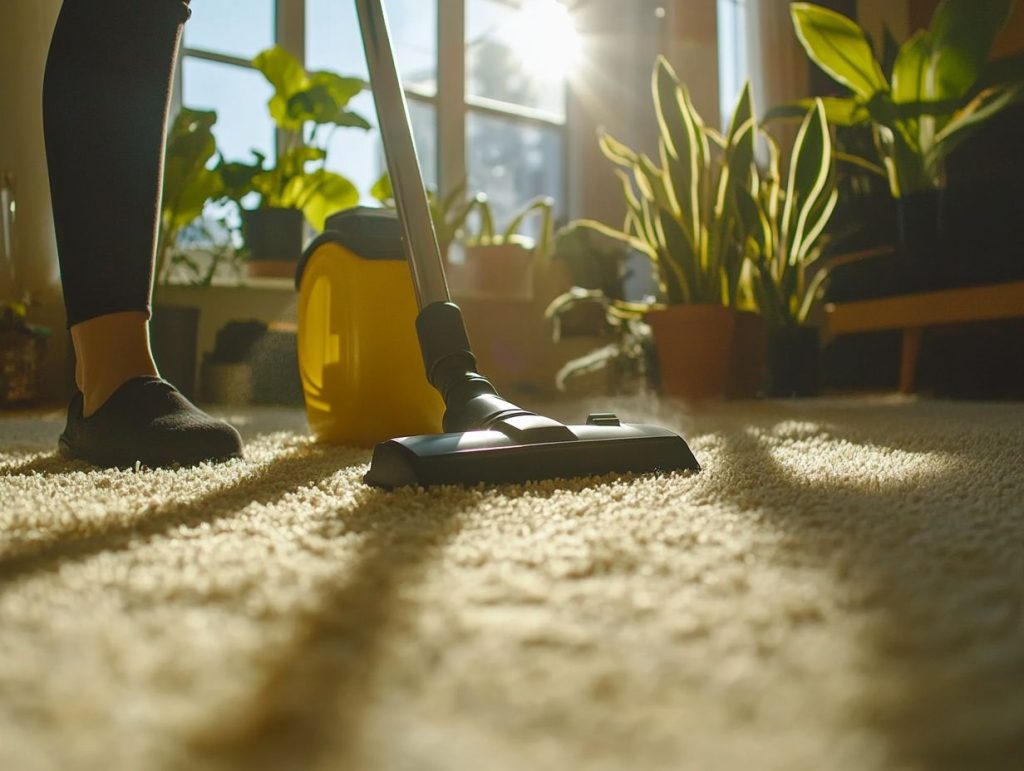
The Importance of Indoor Air Quality
Indoor air quality is extremely important for keeping your home healthy and comfortable because it significantly affects your well-being. If the air quality is poor, you could experience various health issues, including respiratory and allergy symptoms. It is essential to address this concern directly.
Factors such as humidity control, proper ventilation, and keeping indoor pollutants at bay can significantly affect the air you breathe. By focusing on air quality, you are not just enhancing your living space but also improving your overall health—especially for sensitive individuals like children and anyone with pre-existing conditions.
Understanding the Impact of Poor Air Quality
Poor indoor air quality can really affect your health, especially your respiratory system and overall comfort at home. The effects can be widespread, from pesky allergens like dust mites and pet dander to more serious pollutants. It might worsen any existing respiratory issues or even trigger new allergy symptoms.
For example, recent studies show that over 50 million people in the UK deal with allergies, and many link their symptoms to the not-so-great air quality in their homes. One person even shared their tale of constant sneezing and itchy eyes, only to discover that the mould hiding in their basement was the sneaky villain behind it all.
Then there are those pollutants like volatile organic compounds (VOCs) from household cleaners that can linger in the air, leaving you with headaches and dizziness. Moreover, children are especially at risk since environmental factors play a significant role in asthma cases. This underscores the importance of tackling this silent threat lurking in everyday living spaces.
How Carpets Affect Indoor Air Quality
Your carpets do a lot when it comes to the air quality in your home. They often act like little reservoirs for allergens and pollutants. Think about it: carpets can trap dust mites, pet hair, and other allergens, which can interfere with the air you breathe and make it harder to keep your living space healthy.
Proper carpet maintenance is essential to tackle this. Regular vacuuming and deep cleaning will help minimise those pesky issues and improve the air quality circulating in your home.
Common Contaminants Found in Carpets
Common contaminants in carpets can affect your health and contribute to poor indoor air quality. Dust mites, pet dander, and pesky odours from bacteria and mildew can all settle into carpet fibres, leading to unpleasant smells and potential allergic reactions.
These unwelcome guests thrive in many homes’ warm, humid conditions, especially in soft furnishings that trap moisture and organic matter. Furthermore, those volatile organic compounds (VOCs) released from carpet materials or cleaning products can exacerbate respiratory issues, particularly for anyone suffering from asthma or sensitivities.
Even something as innocent as lounging on the carpet or allowing your children to play on the floor can stir up those particles, sending them airborne and increasing your exposure. Regular vacuuming and professional cleaning should be on your to-do list.
They are essential steps to help create a healthier living environment for everyone in your home.
The Role of Regular Carpet Maintenance
Regular carpet maintenance is key to keeping your carpets in great shape and ensuring healthier air quality. You can significantly reduce allergens and pollutants trapped in those carpet fibres by adhering to a maintenance schedule that includes frequent vacuuming, surface cleaning, and the occasional deep clean.
This proactive approach not only helps your carpets last longer but also creates a more inviting home environment free from unpleasant odours and potential health risks.
Benefits of Keeping Carpets Clean
Keeping your carpets clean is a game-changer for your health, especially regarding allergy relief and boosting overall household hygiene. Regular cleaning—think dirt removal and eco-friendly products—can help ease those allergy symptoms and improve the air quality you breathe at home.
But it doesn’t stop there! Clean carpets can seriously reduce dust mites and bacteria that love to hang out in messy fibres. Sticking to a solid cleaning routine is a must if you have pets or young children.
Simple things like vacuuming a few times a week and using carpet protectors can keep dirt from piling up and even extend the life of your carpets. And don’t forget about scheduling professional deep cleaning now and then to tackle stubborn stains and odours, making sure your living space stays inviting and healthy.
By caring for your carpets, you’re not only keeping things looking good but also creating a healthier indoor environment for everyone in your home.
Effective Carpet Cleaning Methods
Effective carpet cleaning methods are key to keeping your home fresh and healthy, and you have plenty of options.
Whether you go for DIY methods like spot cleaning with eco-friendly products or professional services that use steam cleaning techniques, knowing what is available can make a difference in how your carpets look and the quality of your indoor air.
Best Practices for Maintaining Clean Carpets
Adopting best practices for keeping carpets clean is crucial for their longevity and boosting indoor air quality. Regular cleaning, effective surface techniques, and smart carpet protection strategies will help prevent dirt from accumulating and extend the life of your carpets.
Consider establishing a solid cleaning schedule, vacuuming at least once a week to remove surface dust and debris. Increasing that frequency can pay off if you have pets or experience high foot traffic.
Remember to spot clean immediately after spills—this can prevent stains from setting in. Using rugs in high-traffic areas is also a great way to protect the carpet underneath.
Consider investing in a professional deep clean every 12 to 18 months to tackle embedded dirt and allergens. Applying protective treatments can help fend off future stains, keeping your carpets looking fresh and vibrant.
Additional Tips for Improving Indoor Air Quality
Improving indoor air quality isn’t just about cleaning your carpets. It’s about taking a multi-faceted approach.
Consider adding air purification systems, ensuring your home has adequate ventilation, and keeping moisture levels in check. These steps enhance the air quality in your space.
Plus, don’t forget about indoor plants—they’re like natural air filters that can help create a healthier living environment.
Other Factors to Consider
When you’re looking to improve indoor air quality, consider various factors like heating and ventilation systems, air quality testing, and even those sneaky carbon dioxide levels. Proper temperature regulation and environmental safety are essential to making your home a cosy and healthy place.
Regular maintenance of your heating and ventilation systems is key to keeping the airflow efficient and reducing pollutants. Plus, air quality testing can help you spot harmful particulate matter, which, mixed with high carbon dioxide levels, can make things uncomfortable and affect your thinking.
Investing in air purifiers and ensuring good ventilation can really boost indoor air quality. By adopting these measures, you’re not just making your living space more enjoyable; you’re also creating a healthier atmosphere that protects your well-being for the long term.
